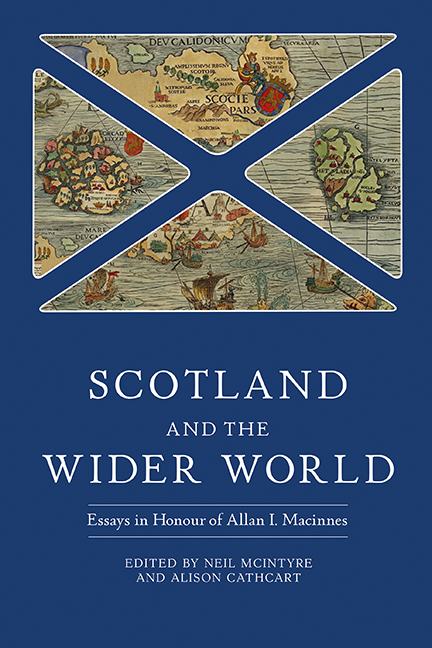Book contents
- Frontmatter
- Contents
- List of Contributors
- Preface
- List of Abbreviations
- 1 Covenants, Clans and Unions in Context: Celebrating the Scholarship of Allan I. Macinnes
- Part I Peoples and Cultures in Britain and Ireland
- Part II War, Religion and the House of Stuart
- Part III Union, Empire and Enlightenment
- List of Publications
- Index
- Tabula Gratulatoria
- Studies in Early Modern Cultural, Political and Social History
5 - The Auld Alliance and the French Intervention in the Thirty Years’ War, 1630–48
Published online by Cambridge University Press: 26 May 2022
- Frontmatter
- Contents
- List of Contributors
- Preface
- List of Abbreviations
- 1 Covenants, Clans and Unions in Context: Celebrating the Scholarship of Allan I. Macinnes
- Part I Peoples and Cultures in Britain and Ireland
- Part II War, Religion and the House of Stuart
- Part III Union, Empire and Enlightenment
- List of Publications
- Index
- Tabula Gratulatoria
- Studies in Early Modern Cultural, Political and Social History
Summary
The history of the Franco-Scottish Auld Alliance has a long pedigree and remains a feature in written assessments of Scotland's military campaigns from the late thirteenth until the mid- sixteenth century. This essay seeks not to rehash these well-known contributions but to query the end date often ascribed to that alliance. Recent scholarship has put beyond doubt any notion that the commercial aspect of the pact died in the mid-sixteenth century. Previously it was asserted that any meaningful military aspect to the alliance ended after the removal of French garrisons from Scotland under the terms of the Treaty of Edinburgh in 1560. But the treaty also saw the departure of English troops from Scotland, and, as we know, Anglo-Scottish relations generally improved thereafter.
It is important to understand that Scotland's ties with England did not necessarily mean that the continuation of an alliance with France was impossible. Thus, the Gens d’armes Écossais du Roi (1488–1788) continued to serve throughout the sixteenth century, with larger levies occasionally raised as allied forces when required. Henri Duc de Rohan reiterated the importance of the alliance in 1600, confirming its continued relevance on the cusp of the seventeenth century. George Gordon, marquess of Huntly, travelled to France in 1623 to breathe new life into the Gens d’armes, but returned to Scotland in 1624 on finding the unit effectively moribund.
Upon Charles I's accession to the throne in 1625, Stuart–Bourbon relations rapidly deteriorated, despite his recent marriage to Henrietta Maria. Within two years, Charles had blundered his way into war against her brother, Louis XIII. He did so at a time when his own sister, Elizabeth Stuart, the exiled queen of Bohemia, was desperately seeking allies for the coalition then fighting (partly) on her behalf against the Holy Roman Empire. Many of the belligerents hoped France might be persuaded to join the anti-Habsburg alliance, but that would take several more years and changes of circumstance to occur. The Scottish context to the Franco-British wars is often overlooked, but only a third of the six-thousand-strong Stuart army engaged against Louis XIII at La Rochelle in 1627 were English.
- Type
- Chapter
- Information
- Scotland and the Wider WorldEssays in Honour of Allan I. Macinnes, pp. 69 - 83Publisher: Boydell & BrewerPrint publication year: 2022

